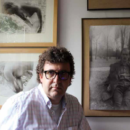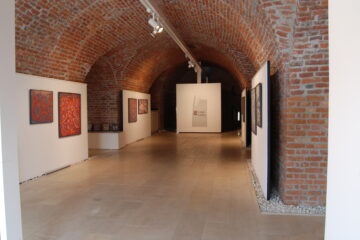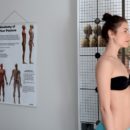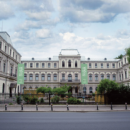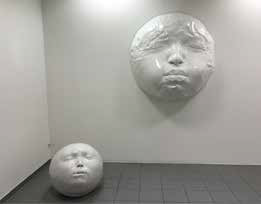
Anaid Art Gallery
Diana Dochia is gallerist, curator, entrepreneur, professor art historian and one of the contemporary art specialists who opened the path for new perspectives and opportunities for young Romanian artists. Anaid Art Gallery, that she founded in 2004 is a reference point that has produced in 12 years of activity many exhibitions, came up with new programs and provided a great exposure of Romanian art on the international market. Anaid Art Gallery aims to promote Romanian contemporary art by developing partnerships and collaborations with international galleries, museums and art centers, encouraging and stimulating aesthetic values, also providing a favorable space of dialogue between creators and their public.
Anaid Art Gallery became one of the most active Romanian cultural spaces thanks to personal exhibitions of emergent or consecrated artists, participation to important fairs and promoting innovator display concepts of the newest visual art, design, video art and new media trends.
In 2006, Anaid Art Gallery has co-founded the National Network of Romanian Museums (RNMR) and in 2013 the Romanian Contemporary Art Galleries Associations (AGACOR).
The newest and most praised success of the gallery is its international expansion; for one year it has been into existance also in Berlin (undoubtedly one of the first cultural cities of the world) – located in the main area of important galleries.
We should begin by saying that first and foremost you are a graduated economic studies. How was your passion for art born? A passion that you later on transformed into a job.
I was in love with antique art since I was a teenager. I found it extremely mysterious and fascinating to imagine the things that took place back then and how life was in those ancient Greek and Roman cities. As a consequence, I enrolled for studying Art History, wishing to get a deeper knowledge and research into the field art. Yet, I had an optional class of contemporary art taught by professor Adrian Guță, so I ended up loving this particular field and I wanted to open a contemporary art gallery.
Anaid Art Gallery was the first contemporary art gallery opened in Bucharest; it was conceived and set up especially for this purpose. After 12 years of experience, what is – in your view – the picture which best describes the situation of Romanian contemporary art in 2016?
During Anaid Art Gallery’s 12 years activity, Romanian contemporary art scene has changed and grown a great deal. There are manymore private galleries out there that promote contemporary art; in 2004 when we started, there were only three private galleries. There is a series of run spaces; there is a National Contemporary Art Museum, an art fair and even a small, but active number of people who desire to open contemporary art private museums. Practically, we may say that right now the artistic scene is benefiting from a coherent structure that forms an artistic market and system, meaning: artist – gallery – art fair – museum.
We are still missing out on a close connection between the main players and the desire to transform all the institutions and the entire public system into professional entities. There are still some latencies and a lack of maturity, however, when we analyze Romanian art as a whole we must not forget the communist inheritance and the fact that this is a young, emergent and newly shaped system. Then, the public at large has almost no artistic education; this is a something that requires a lot of work and the results shall be seen after a generation or two.
What were the intention and the objectives of Anaid Art Gallery when it opened? What was missing from the contemporary art market at that time?
Anaid Art Gallery was formed according to the principles and the standards of a contemporary art gallery from Western Europe and America. It is a gallery that has a portfolio of artists that it represents and supports at national and international level, both within exhibitions and art fairs. In a way, I believe that Anaid Art Gallery represented the base of this artistic climate through the manner it conceived and created exhibitions and artistic actions. In 2004, there was practically no artistic system and the galleries established during 2003-2006 were the ones that actually set it up.
——————————————————————————————————————————–
Continue reading in The Art of Living no. 16, an issue dedicated to contemporary art. DOWNLOAD



